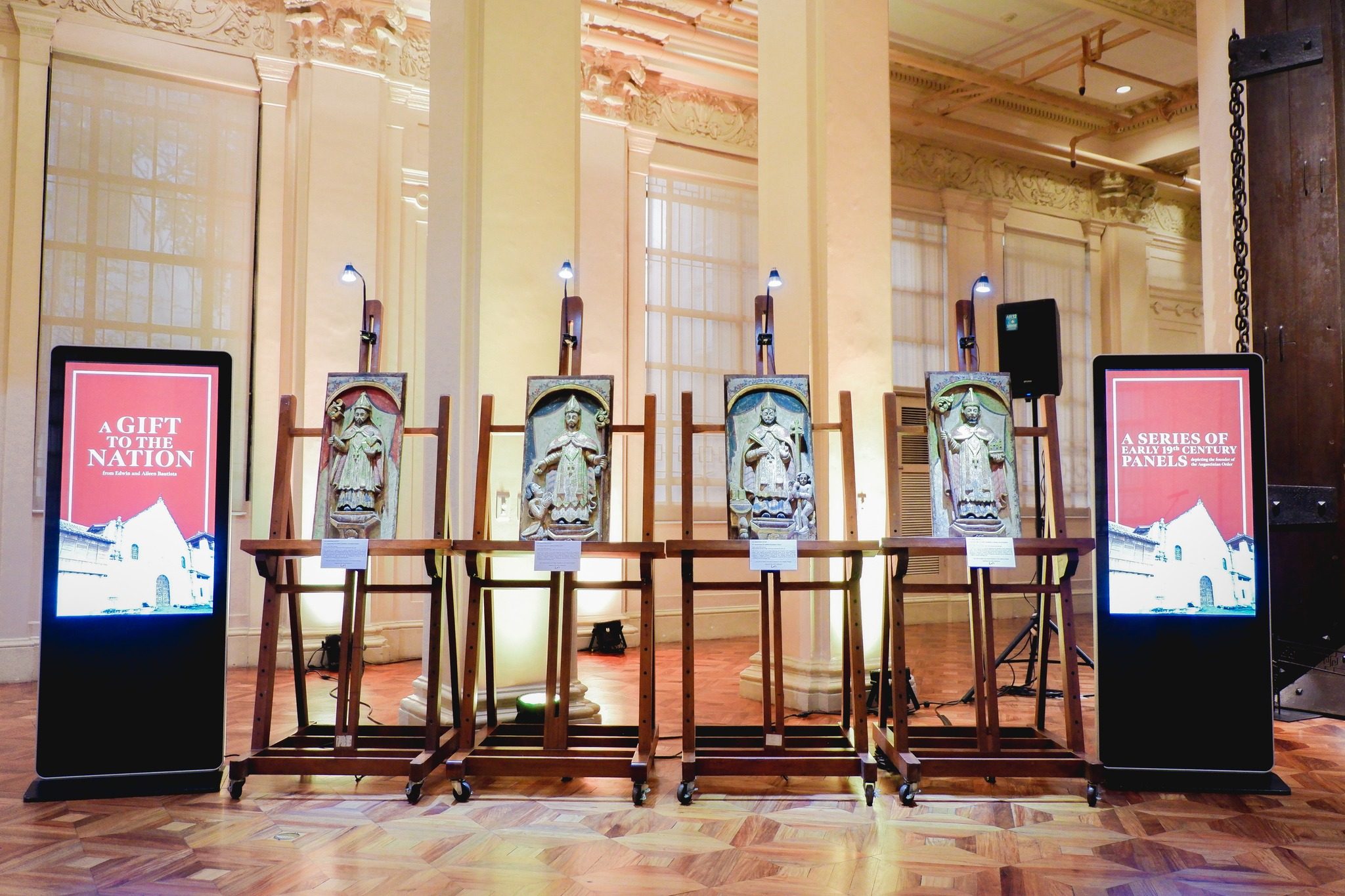SUMMARY
This is AI generated summarization, which may have errors. For context, always refer to the full article.

CEBU, Philippines – The four panels from the heritage church of Boljoon in southern Cebu will be returned, said National Museum of the Philippines (NMP) Director General Jeremy Barns. The issue on ownership, however, will be settled separately.
These things take time, Barns said in an exclusive interview with Rappler on Monday night, April 1, the first time he has spoken up on the issue.
“If we set the ownership issue (aside), whether National Museum owns it or because it can be proved it was stolen, ownership goes back to the [Cebu] Archdiocese, we can let that play out,” said Barns. “But while we own it, we are happy to commit to finding ways to bring them to Cebu and Boljoon and share them appropriately.”
Barns said that for the NMP, the pulpit panels were not stolen from the Archdiocesan Shrine of Patrocinio de Maria Santisima in Boljoon; rather, they were sold by the parish priest.
“We didn’t look at it as a theft because this kind of sale by the parish priest is very widely known and happened everywhere and even still continues to happen. So, that’s why we object to people saying they are stolen property,” Barns said.
He said Cebu Archbishop Jose Palma did not say that the panels were stolen, “it’s just that there’s no record of any authorization to sell them.”
“If we’re saying that that was theft, so are all the priests who did that now officially thieves?” Barns said.
He also said that the Anti-Fencing Law does not apply to them. The National Commission for Culture and the Arts (NCCA) sought the opinion of the Office of the Solicitor General (OSG) on the issue and listed several conditions that need to be established for them to be liable for fencing.
One of those conditions that has to be established is that “a crime of robbery or theft has been committed.” Barns said that while there is no question that the panels came from Boljoon, “we have to see what’s the truth” when it comes to theft or robbery. He said the Cebu archdiocese, which he described as the “original owners,” should prove they were stolen.
Another condition cited by the OSG is that the accused should have known that the items were stolen. He said this does not apply because the NMP does not believe the items were stolen.
“If I get my law on anti-fencing right, the accuser also has to prove that we did this all for personal gain. And, of course, the [National] museum, in accepting this gift, is not in it for any gain, right?” Barns said.
He said he is looking for a win-win solution to the issue. He is considering forming a committee to handle the matter, including the bringing of the panels to Cebu. He said the panels are fragile and they have to assess whether it’s best to install them on the pulpit or keep them in the parish museum while a “perfect reproduction” can be installed on the pulpit.
He said the only statement they had issued was intentionally vague on sharing because there are many ways to make all sides happy.
“We can easily have an agreement with the archdiocese that until something happens, let it be National Museum property, but we will put it there. So, for the community, does that make a difference?” he said.
Barns said that when the Bautistas approached them to offer to donate the panels, they immediately knew they were from Boljoon and that got them excited. He said they knew many items went missing from Boljoon and the donation would be a chance to bring them to public view. Art collectors Edwin and Aileen Bautista donated the panels to the NMP.
He said the NMP has helped bring things back to churches but in the case of the panels, the Bautistas “made it clear that they wanted to entrust it to the museum.”
“We did what we thought was our duty, that the higher purpose was to bring back to the public – what was private for 40 years through a chain of private owners – to bring it back into the public and use our position to share them back with the Cebuanos and if possible, with Boljoanons specifically,” Barns said.
He said the NMP considers Boljoon “one of our cherished heritage sites.” NMP declared it a National Cultural Treasure and is now pushing for World Heritage status.
NMP chairman Andoni Aboitiz is scheduled to talk with Palma in the middle of April. The NMP board will then meet in May and will be able to announce their action. The panels are now part of the NMP’s collection and any move needs board approval, he said.
“We’re acting on the concerns that have been raised. We’re acting on all the resolutions that have been passed and received by us from Boljoon, from the province, from the Archdiocese, even from the Augustinians in Cebu,” he said.
Barns said the National Museum is also passionate about Cebuano heritage “and we will do the right thing for the people of Cebu, for the nation.”
The four panels were part of six that used to adorn the pulpit of the heritage church of Boljoon. They went missing in the late 1980s. Apart from the four with the NMP, one panel is currently being displayed at the Boljoon parish museum. One more panel is still unaccounted for. – Rappler.com
Add a comment
How does this make you feel?
![[The Slingshot] No, no, no, National Museum! The Boljoon artifacts do not belong to you!](https://www.rappler.com/tachyon/2024/02/tl-boljoon-artifacts-nat-museum-02242024.jpg?fit=449%2C449)
![[The Wide Shot] Peace be with China](https://www.rappler.com/tachyon/2024/07/wideshot-wps-catholic-church.jpg?resize=257%2C257&crop=311px%2C0px%2C720px%2C720px)
![[OPINION] A critique of the CBCP pastoral statement on divorce](https://www.rappler.com/tachyon/2024/07/TL-cbcp-divorce-statement-july-19-2024.jpg?resize=257%2C257&crop=285px%2C0px%2C722px%2C720px)


![[The Wide Shot] Was CBCP ‘weak’ in its statement on the divorce bill?](https://www.rappler.com/tachyon/2024/07/cbcp-divorce-weak-statement.jpg?resize=257%2C257&crop=258px%2C0px%2C719px%2C720px)










There are no comments yet. Add your comment to start the conversation.